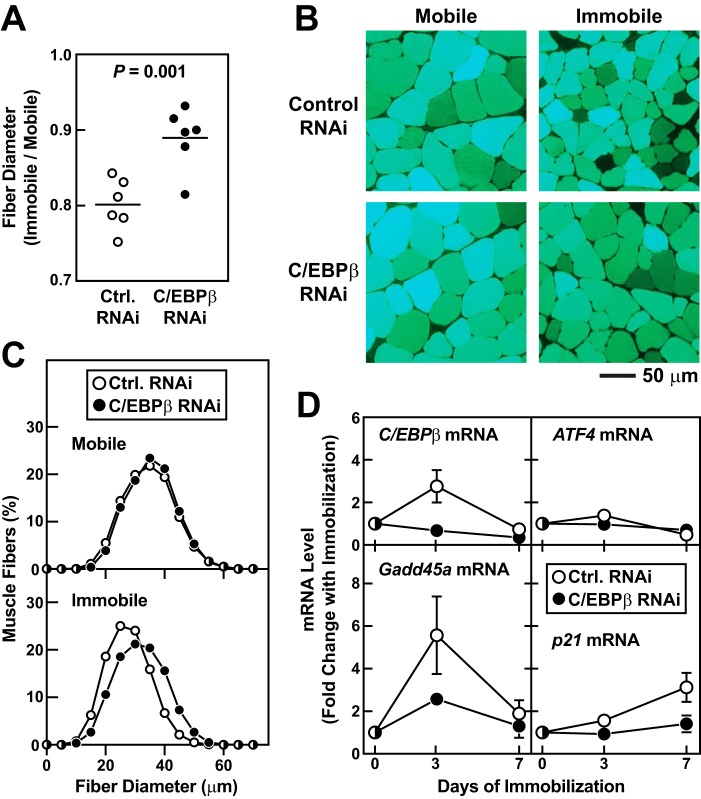Figure 6.
C/EBPβ is required for immobilization-induced Gadd45a expression and muscle atrophy. A–C, in one cohort of mice, bilateral TAs were transfected with 20 μg of control RNAi plasmid. In a second cohort of mice, bilateral TAs were transfected with 20 μg of C/EBPβ RNAi plasmid. Three days after transfection, one hind limb in each mouse was immobilized, and 7 days later (10 days post-transfection), bilateral TAs were harvested for histological analysis. A, in each mouse, the average muscle fiber diameter in the immobilized TA was normalized to the average muscle fiber diameter in the contralateral control (mobile) TA. Each data point represents the value from one mouse, and the horizontal bars denote means. p value was determined with an unpaired t test. B, representative fluorescence microscopy images of muscle cross-sections. C, size distribution of all muscle fibers from A; each distribution represents >6800 muscle fibers from six muscles. D, TA muscles were transfected and immobilized as in A–C and then harvested at the indicated days post-immobilization for qPCR analysis of C/EBPβ, ATF4, Gadd45a, and p21 mRNAs. mRNA levels in immobilized muscles were normalized to the average level in control RNAi-transfected mobile muscles. Data are means ± S.D. from four to six mice per condition. Some error bars are too small to see. Two-way ANOVA revealed a significant effect of time on all four mRNAs, and a significant effect of C/EBPβ RNAi on C/EBPβ mRNA (p < 0.0001), Gadd45a mRNA (p < 0.001), and p21 mRNA (p < 0.0001) but not ATF4 mRNA.

